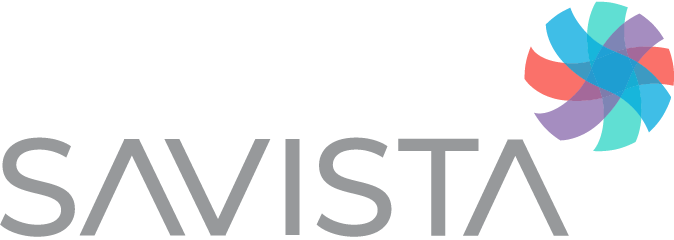
Savvy hospitals are taking advantage of legislation that requires hospitals (and soon payers) to provide price transparency data to the public by using it to create new revenue cycle benchmarks. They’re building a capability to analyze the pricing of competitors for shoppable services, and are adjusting their business models to support favorable gross charges and net revenue yield, all while ensuring defensibility of the charge description master (CDM). Additionally, these organizations are taking the added step of marrying this charge data with newly released reimbursement data to create a more complete picture of their business and aide in negotiations with managed care partners.
How are these hospitals benchmarking their charges and reimbursements to the broader healthcare market? And how can revenue cycle benchmarks help you?
Charge and Reimbursement: A Tale of Two Benchmarks
Charge Benchmarking – the focused study of charges versus market pricing – offers insight on adjusting prices for high volume services and driving patient visits.
In 2021, when legislation required the list prices of charges to be published, patient confusion actually rose. Most were not aware that listed gross charges would not help them determine their out-of-pocket costs. Except for those who understand the healthcare provider/payer relationship, most patients have none or little knowledge of contracted rates with payers and their impact on deductibles and coinsurance amounts owed.
Case in point: Hospital A’s list price for a CT scan is $5,000. Hospital B’s list price is $3,000. Comparison of the two listed prices leads the patient to believe that hospital B is the more prudent choice. What the patient does not know is that hospital A negotiated a contract with the patient’s payer that results in lower financial obligation for the patient. The patient selects hospital B. So, despite price transparency, the patient ends up paying more at hospital B than they would have paid at hospital A. In this scenario, it would be wise for Hospital A to lower its list price for a CT scan to attract patients. This would not affect the average reimbursement per procedure, but it would most likely drive additional patient volume.
Hospitals would be wise to also analyze these shoppable services, taking their overall capabilities and strategy into consideration, for example, determining which services they want to provide more than others, and paying attention to how competitors are viewed within their market. Gone are the days of across-the-board CDM increases without regard to patient consumerism.
Reimbursement Benchmarking – to study payer reimbursement differentials between hospitals – is now a possibility as aggregated data from actual reimbursement is posted by hospitals as part of the price transparency regulation.
Access to payer reimbursement data alters the relationship between payers and healthcare providers. This transparency has transformed these negotiations into open discussion about relative leverage among competitors, cost efficiencies and quality metrics. Payers are now subject to payment scrutiny and must justify significant rate differences for the same service amongst providers in the same geographic area. Providers, in turn, must defend their costs and appeals for increased reimbursement.
As insurance reimbursement often drives out-of-pocket costs to patients, insight into competitor reimbursement rates:
- Provides intel to hospitals for negotiating lower rates of certain services to drive volume.
- Increase reimbursement in other, less cost-sensitive areas to remain net revenue neutral or even net revenue positive.
Prior to price transparency regulations, this approach would have been imprudent due to lack of insight into competitor reimbursements, but the availability of data has changed all that.
Effective July 2022, the mandate for payers to release reimbursement information of their own goes into effect. Their information is expected to be more accurate and robust than the data currently posted by hospitals. Providers will have access to crucial information that shifts the dynamic of the negotiation process to a two-sided dialogue; both parties will be equipped with information that drives conversation and creates more equitable payment models. Armed with defensible intelligence, healthcare providers can demand rates that are reflected in the market, prevent revenue leakage and could promote revenue growth.
Use Revenue Cycle Benchmarks to Your Competitive Advantage
To preserve market share and build patient loyalty, hospitals and healthcare organizations would be well serviced to invest in and build a CDM pricing strategy that aligns charges closer to expected revenue.
Comprehensive CDM benchmarking and pricing reviews can support an organization’s revenue goals and align list fees within the regional marketplace simultaneously. A combination of price transparency data and strategically modeled charges can:
- Capture impact on net revenue by modifying charges.
- Compare adjustments to marketing pricing.
- Gain insight into how it all affects patient perception of value and price parity.
- Assess CDM effectiveness.
- Compare charges and reimbursement models to other providers.
- Evaluate your pricing strategy. Determine impact of payer reimbursement data and its impact on future planning.
- Develop a business model based on costs, compliance and revenue to set charge structure goals.
Not sure where to begin or don’t have resources to perform the analysis? Consider partnering with a revenue cycle management partner to perform a benchmarking assessment and help build an overall CDM strategy. This is an investment that could provide long-term competitive, financial and compliance value. Savista is seasoned in CDM based charge and reimbursement benchmarking and can facilitate substantial revenue growth and goal achievement for your healthcare organization.
Subscribe to the Revenue Cycle Navigator Newsletter
CDM SERVICES
Ensure a Healthy Bottom Line
Proper CDM setup and maintenance is especially important as you face declining reimbursements and rising scrutiny of charging accuracy, pricing transparency, and justification. However, a best practice CDM requires time and resources that most providers simply do not have. Let our seasoned experts help you optimize and maintain your CDM to improve billing practices, mitigate compliance and regulatory risks and improve patient satisfaction.


Contact Us
Let's Get Started
Get in touch with a representative today and find out how Savista can transform your business.
